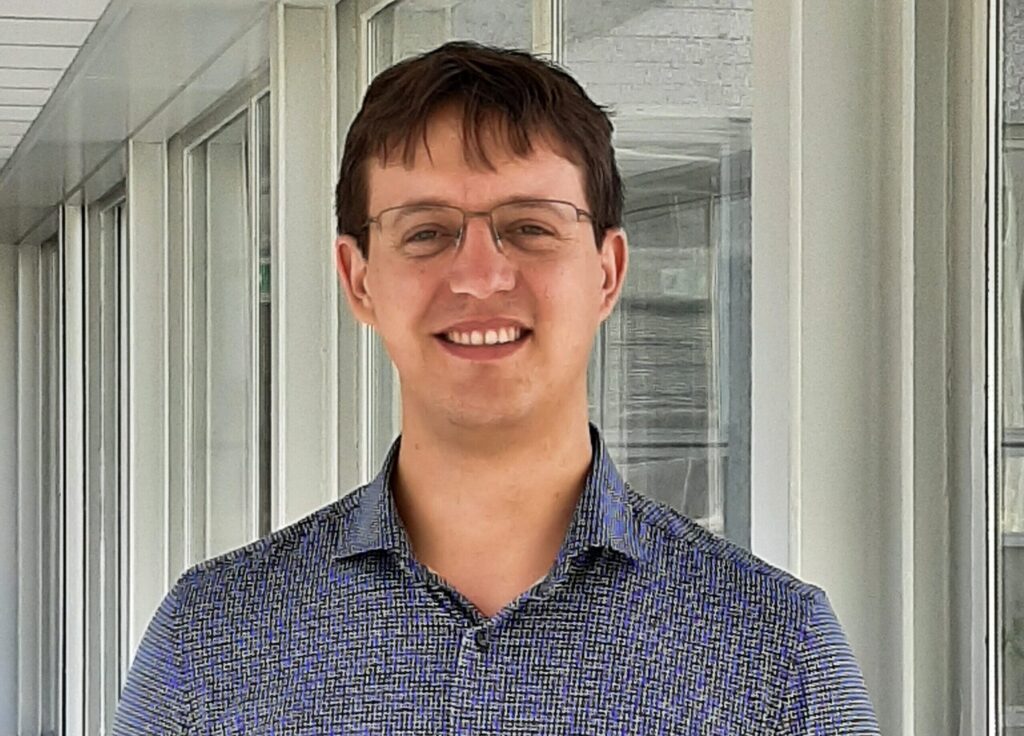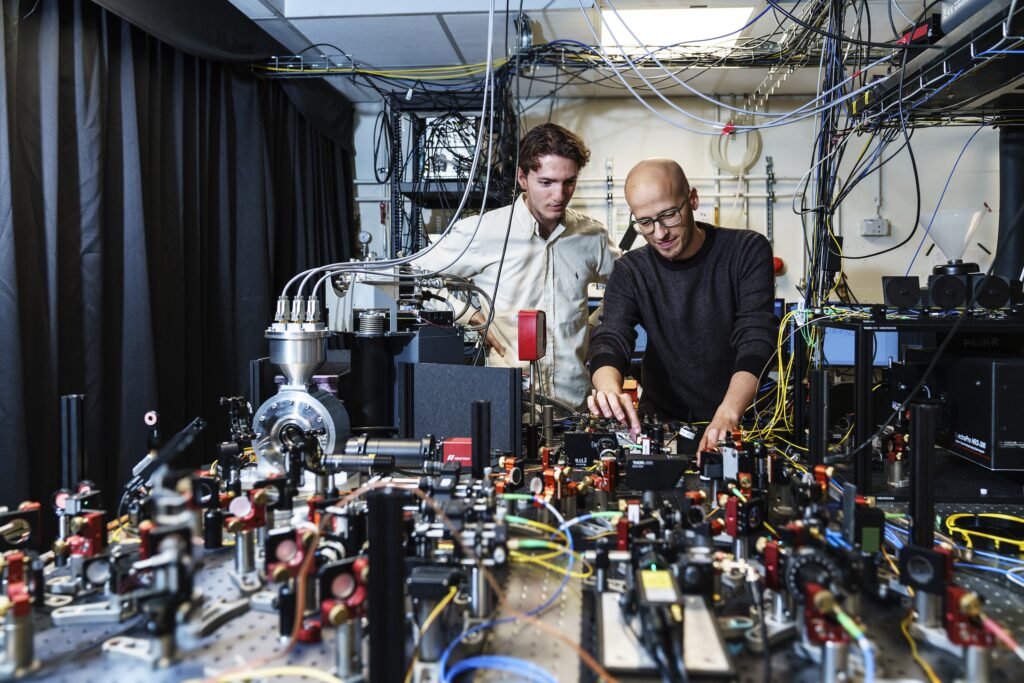23.10.2025Awards
New Vidi grants for scaleable Quantum Chips and a multi-use Quantum Internet
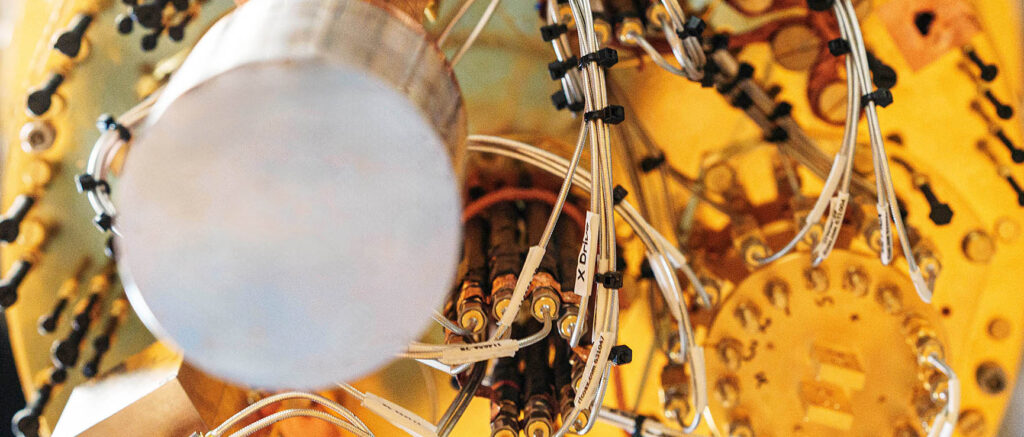
While quantum technologies promise enormous societal benefits, progress is still limited by fundamental technical barriers. For example, how to interconnect quantum devices into functional networks, or how to scale fragile qubits into reliable processors with a multitude of qubits. Two new Vidi projects at QuTech, led by Sophie Hermans and Maximilian Rimbach-Russ, aim at directly these challenges.
A scalable, digitally controlled quantum processor
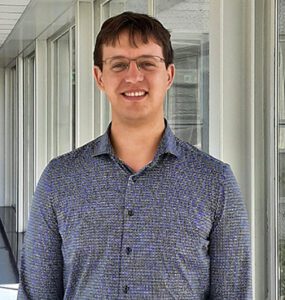
Maximilian Rimbach-Russ
Current quantum processors rely on delicate analog control that quickly becomes unmanageable as systems scale to the millions, of qubits needed for practical quantum computing. Maximilian Rimbach-Russ’s Vidi project aims to change this by developing qubits that can be operated using simple, digital control signals, as used in today’s ordinary computer chips.
His approach is based on hole-spin qubits in germanium: tiny semiconductor structures that confine individual charge carriers. Thanks to their unique properties, these qubits can be switched at ultra-fast clock speeds with little power consumption using purely electrical baseband signals, therefore avoiding the complexity of analog control while minimising information loss.
To realise this vision, Rimbach-Russ and his team will build a quantum technology computer-aided design framework to optimize chip layouts and develop new heterostructures that can overcome qubit variability and unwanted signal crosstalk. They will also design a unified digital control system capable of performing every qubit function with extremely low error rates at very high clock speeds. Finally, by developing fast qubit-shuttling protocols that connect distant qubit registers while preserving quantum coherence, the team aims to create a blueprint for a scalable, fault-tolerant quantum microprocessor — an essential step toward large-scale, practical quantum computers.
Building next-generation quantum network nodes
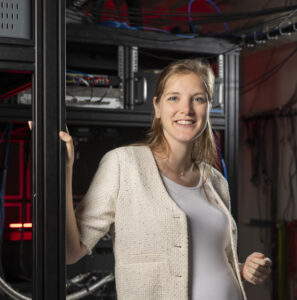
Sophie Hermans
Sophie Hermans will tackle a different bottleneck: building next-generation quantum network nodes for a future quantum internet. Today, most nodes use a single quantum emitter, which limits both the number of connections and the rate at which entanglement can be created. Hermans’s goal is to equip each node with multiple emitters that are deterministically connected inside the node, so every qubit is available on demand.
Her team will engineer crystals that host two distinct species of rare-earth ions. The two species of qubits will emit light with different colours, enablingindividual control with minimal crosstalk. To achieve this, the researchers will use a process called co-doping, which means introducing two types of rare-earth ions into the same crystal. This dual doping subtly changes the crystal’s internal structure, creating tiny local strains that fine-tune the quantum environment. These adjustments allow the emitters to be placed closer together and interact more strongly — without losing their quantum coherence or controllability.
If successful, the result is a flexible, multi-use quantum internet where entanglement is an always available commodity. A single network could support applications from ultra-secure communication and authentication, to cloud-based (including blind) quantum computing, and distributed sensing, with nodes able to switch roles and handle multiple connections as needs evolve.
To learn more about Hermans’s work, see QuTech’s science story “From Lockers to Networks: Quantum Networking with Rare-Earth Ions”.
About the NWO Vidi programme
The NWO Vidi grant is part of the Netherlands Organisation for Scientific Research’s Talent Programme, which supports excellent researchers in developing their own research lines. Each Vidi award provides up to €850,000 over five years and sits between the early-career Veni and senior Vici grants within the Veni–Vidi–Vici structure.
With these two Vidi grants, QuTech reinforces its committed research to developing scalable prototypes of a quantum computer and an inherently safe quantum internet, merging fundamental research with engineering impact.

